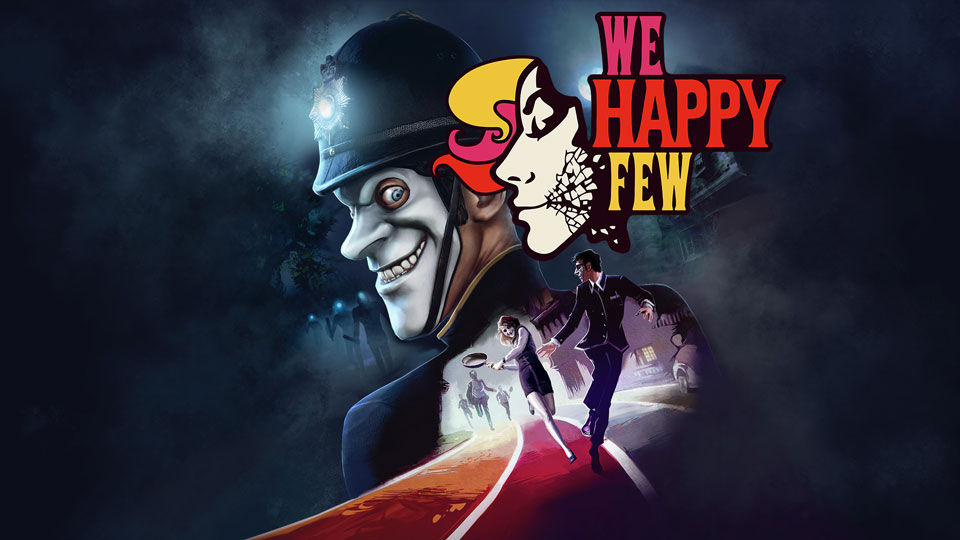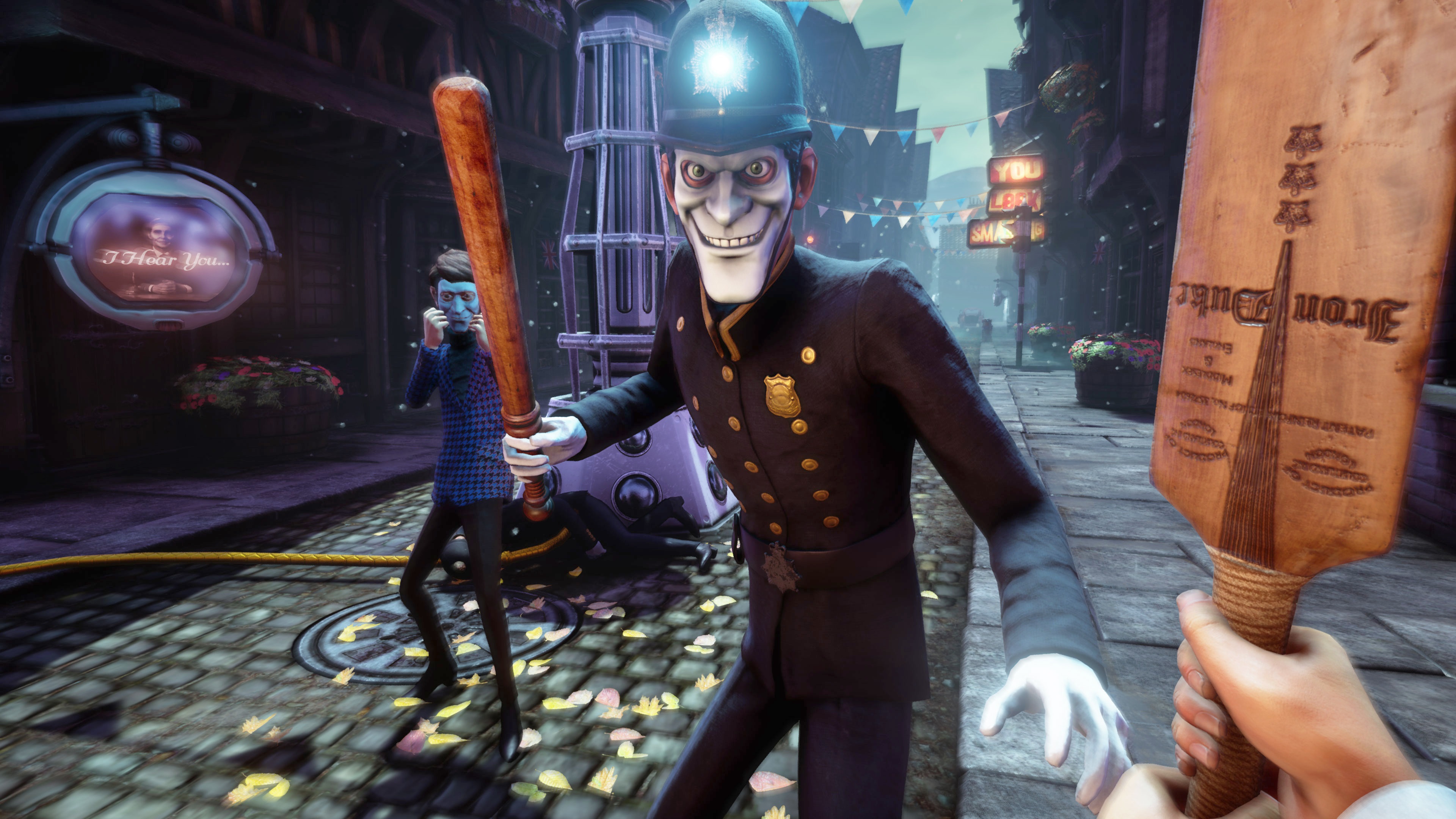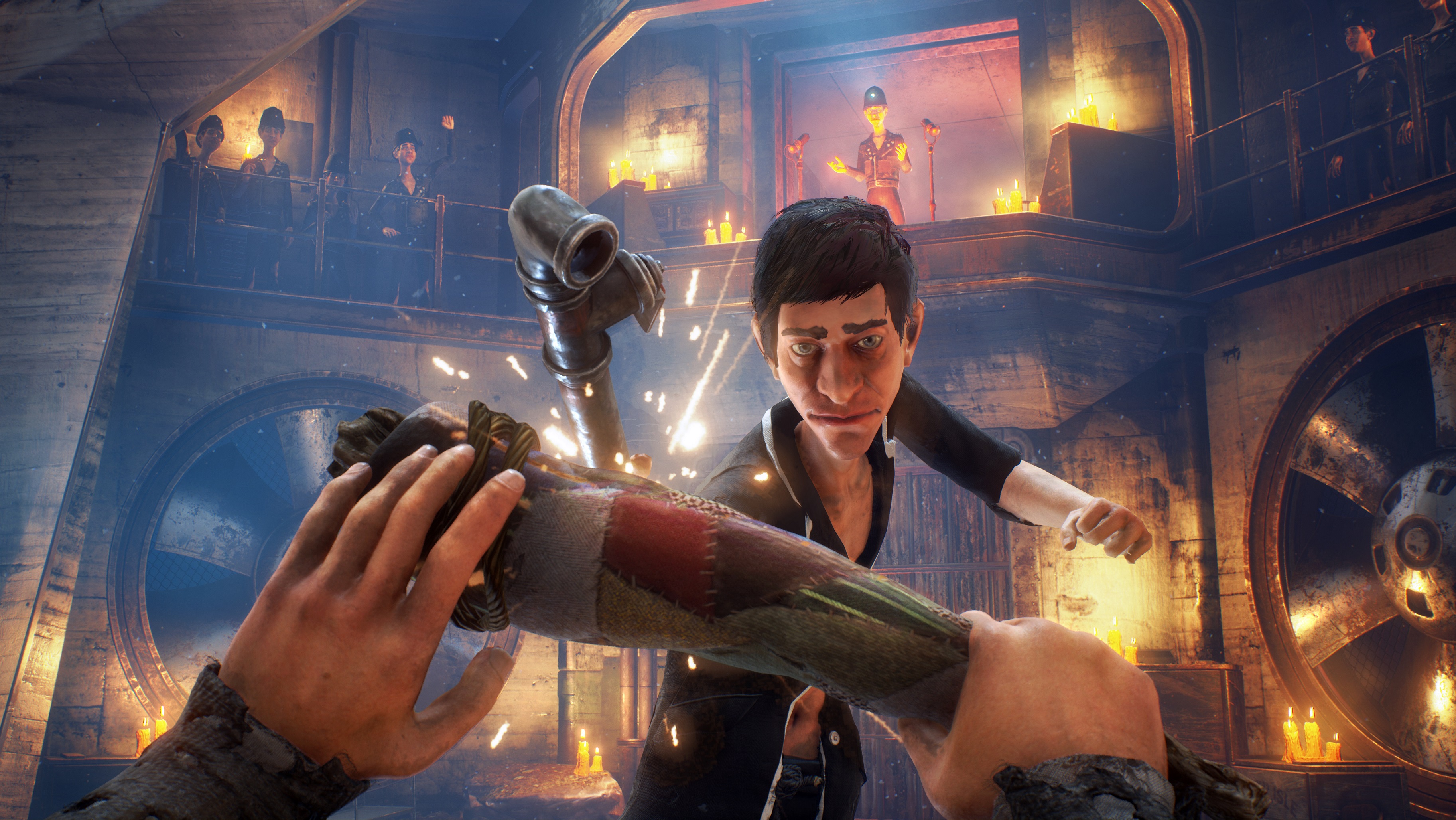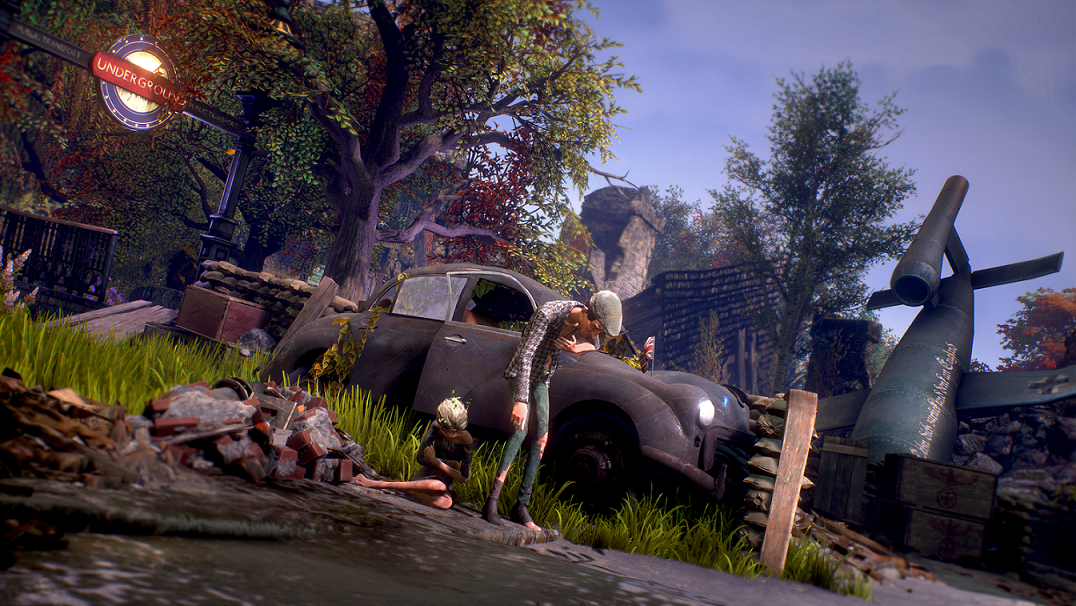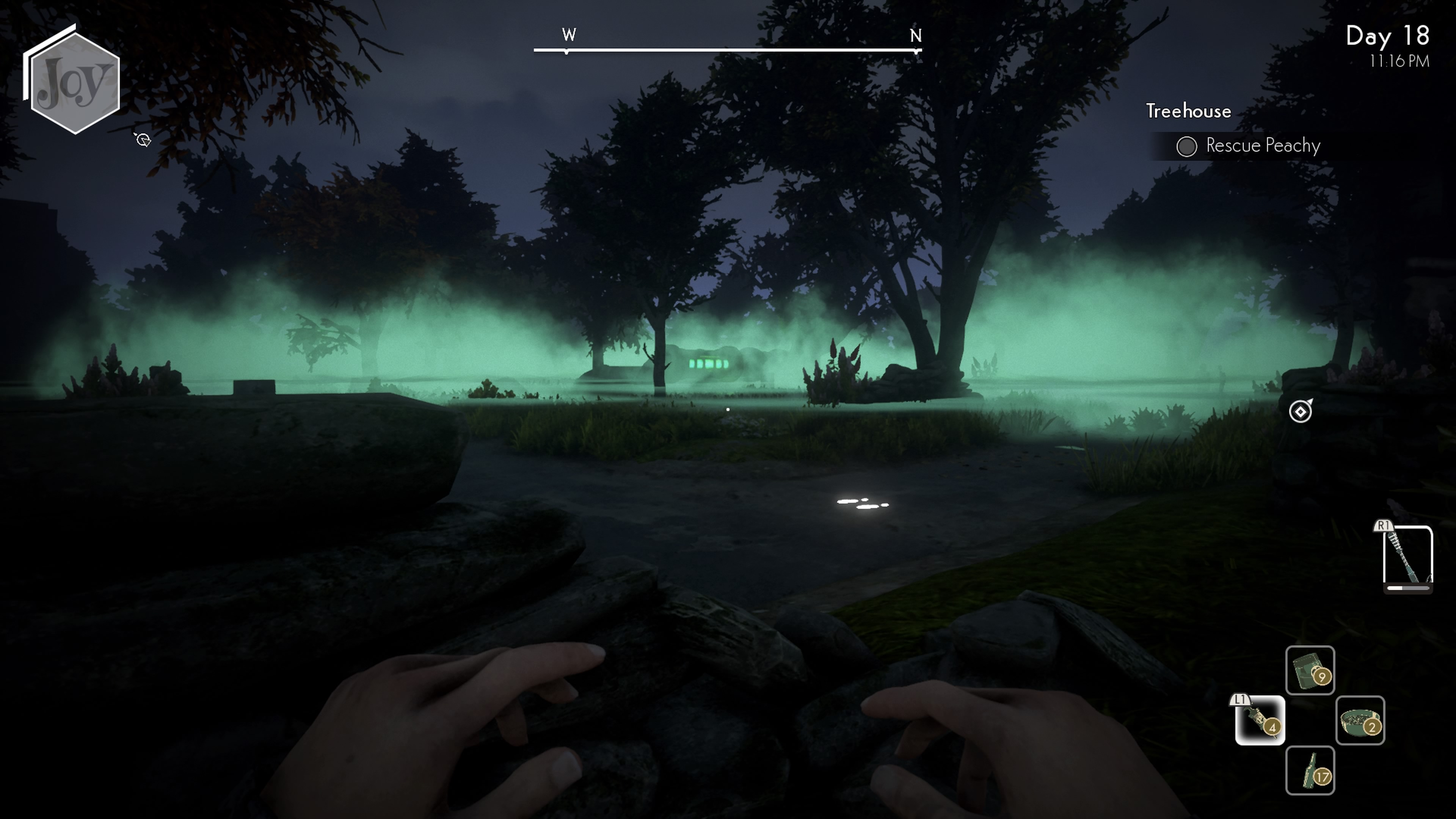There are some things from our past that we don’t want to remember. A bad reminder that often keeps you down affects not only yourself but the others around you. But what if there is a way to make it all go away? Surely, there is nothing wrong with wanting to make the hurt go away. Everyone wants to be happy. And if everyone is happy, there will be no more conflicts. What a wonderful thing… this joy is.
Reviewed: Playstation 4
Platforms: PC, Playstation 4, Xbox One
Developer: Compulsion Games
Publisher: Gearbox Publishing
Release Date: August 10, 2018
MSRP: $59.99
This review is based on a copy provided by Gearbox Publishing.
Overview:
We Happy Few is an action-adventure game set in an alternate version of England in which the people of Britain had surrendered to the Germans during World War 2. In the game’s story mode, players take on the role of Arthur Hastings whose memories have started to return after taking joy for many years. His thoughts turn to Percy, and the day at the train station. It doesn’t take much for his coworkers to suspect that he was not well. Arthur has no choice but to flee the city the moment the others notice that he was off his joy. And thus, starts a desperate journey to uncover the fate of the brother Arthur left behind.
Gameplay and Features:
It’s all about conformity. Several districts divide the whole city, each with their rules that the player must abide with in order to blend in. The Garden is overrun with Downers, people who can no longer feel the effects of joy and must live out the rest of their days in green desolation. They mostly keep to themselves, and only ever attack if someone trespasses or attacks them. In places such as Maidenholm, the folks are civil and regularly ingest joy. They frown upon anyone who does anything other than walking and greeting. Having the proper suit won’t raise too many alarms. And popping a joy pill might improve the player’s chances even more. Just be careful not to overdose on the stuff.
Combat usually involves fists flying in all direction, with the occasional melee weapon just to drive the point home. Players can punch, block, and shove their way out of any fight. An altercation in any common area will result in all residents coming over to beat the ever loving life out of the player. Take great care to NOT rock the boat too much. Stealth is usually the answer in dealing with patrols and persons unaware. It’s a good thing there are sunflower patches that block the sight of anyone nearby. With the right training, the player can subdue their foe without so much as a fuss.
The city of Wellington Wells is an open world where the player is free to explore at their leisure. Most of the time, players come across bits and ends that are useful for crafting items. These can be found in various containers. Finding blueprints expand the player’s crafting pool, allowing them to make anything from healing items to bombs. Running around increases hunger and thirst. Blue currant bushes provide a nice snack, though not too filling. Water pumps are a good source of clean water. Be careful of the ones in town though, their water is laced with joy.
Each district is pretty much a self-contained island with travel to and fro strictly regulated by the powers that be. Let’s also say that civil folk do not take kindly to downers, and vice-versa. The map contains several points of interest and side quests that sheds more light on the current state of the world. In times of peril, the player can seek out shelters that house crafting and chem stations. A safehouse in all but name, the player can use the shelter to store their extra gear and use the bed for rest and time advancement. A railway track connects shelters to each other. Activating them will allow the player to fast travel to other shelters without having to deal with bridge authorities.
The Good and the Bad:
The story of We Happy Few is an interesting one. It is of a mature nature that many a game developer do not wish to tackle. I like that the devs are willing to take up the challenge. Some of the subjects in the story deal with denial, loss, and substance abuse. The story is further re-enforced by its lead man, Arthur Hastings.
In truth, Arthur is not the typical video game hero. He has no greater aspiration other than finding his long lost brother. The very definition of English cynicism, Arthur puts on a brave face. But deep down inside, he wishes none of this came to pass. His story of redemption is one that keeps the game interesting. Little by little, memories of the past begin to eat away at his conscience. In key areas of the map, there lie masks that contain memories of the past. Giving us the chance to find out more about the past he no longer remembers.
As much as I praise the game for its story. It’s in mechanics that this game really falls short of. Simple AI, I can tolerate. Predictable movements and simple actions make up for a playable game. However! I cannot help but be angry at any sort of AI that moves unexpectedly. I’m talking about guards that stare at sunflowers for well over a minute after the player catches their attention. The moments when NPC’s are going through melee weapon attack animations but have nothing in their hands, and do no damage. Or hitting the near death state from full health when the enemy strikes once with a shovel. The list goes on and on.
The game prides itself in having a procedurally generated world. That’s all fine and all. But to have the same open world problems plague the main story is another thing. The textures seem to come into focus a few meters away from the player. Heck, there are loading screens within the same open areas. With today’s technology, you’d think that something like that is no longer an issue. And a quick mention of times when characters and the camera are out of alignment in cut scenes. How often did issues pop up in play testing? Just a thought.
Final Verdict:
Something isn’t quite right with Wellington Wells, and I’m not just talking about the people living there. As a survival game, it’s not as bad as I make it out to be. In fact, the random nature opens the possibility for some truly unique moments. I recommend playing this game in custom mode. Having permadeath and the need to constantly adapt to your surroundings makes for gripping gameplay. It’s just disappointing to have the story mode looking unfinished, despite having a good story with some interesting characters. There’s enough good points to warrant at least a single playthrough. In the end, it’s up to the charm of the characters as the deciding factor for additional playthroughs.



